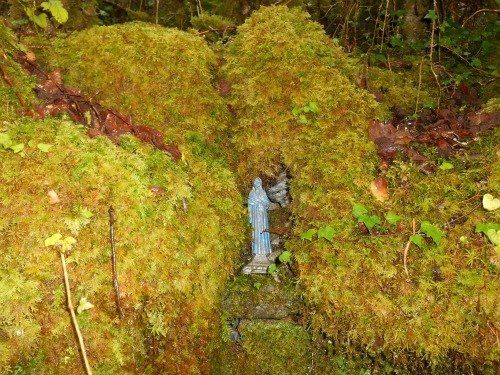A Holy Well on the R480

The
R480 is a 16.4 kilometre long regional road stretching from Ballyvaughan in the
north of the Burren to Leamaneh Castle in the south.
It is the main arterial route in the Burren interior. In high season the road can be heavily trafficked.
The roadside is littered with outstanding National Monuments including the ring forts An Ráth, Cahermore and Caherconnell. Ireland’s oldest known megalithic tomb Poulnabrone (5,800 years old) is also on the verge of the road. Poulnabrone attracts at least 100,000 visitors per annum.
I recently “discovered” another monument along the road – a holy well called Tobargahard. It is a magical site which seems to avoid the attention of almost everybody.
Tobargahard was formerly situated in the classic Burren upland landscape of limestone pavement and thin soil. However, the monument has been hidden in recent years by the advance of hazel scrub. Scrub is advancing due to decline in farming in the uplands. The scrub may eventually occlude the well entirely from future generations. Hazel is glorious native tree but it is an enemy of archaeology.
Tobargahard may be an Anglicisation of Tobar go hArd which means the well on high. The monument is located just above Gragan Valley which was heavily populated in the 19th century. There is a walled entrance to the well which faces the valley. The wall is now covered in moss which is thriving in the scrub.
Folk
medicine was widespread in the past and the belief was that the Tobargahard
water cured eye ailments. I reckon that the waters of about 50% of Ireland’s 3,000
plus recorded holy wells are renowned for eye cures.
I recorded just three pilgrim offerings at the site - two religious figurines on the altar above the well and a rosary beads hung from a tree. When the wind blows, the beads swing like a pendulum.
Tobargahard is an almost abandoned sacred site, a secret of the Burren landscape, a haven of tranquility.




